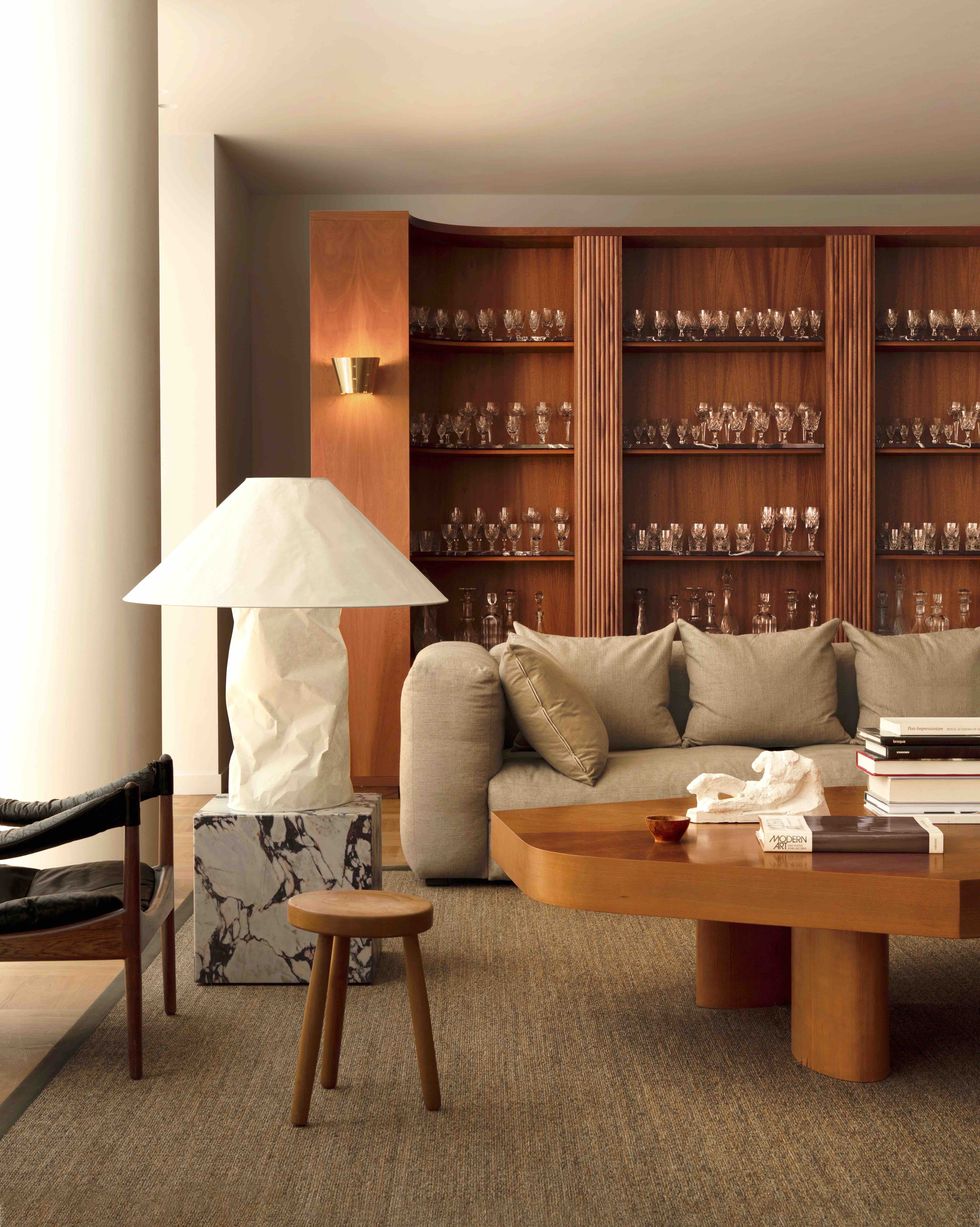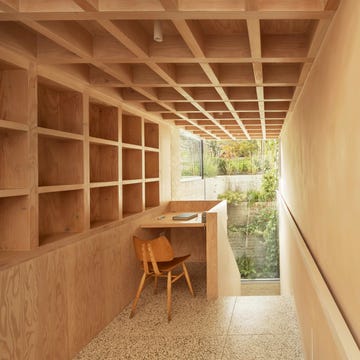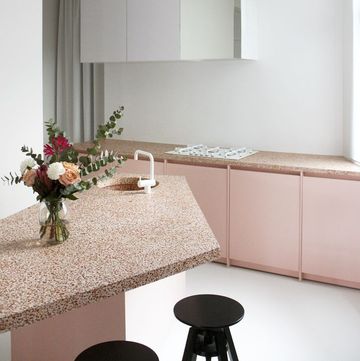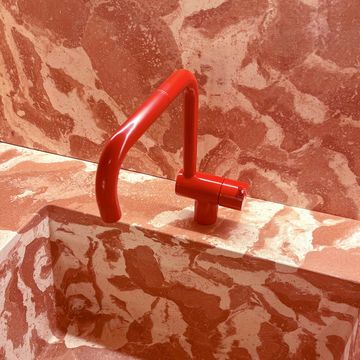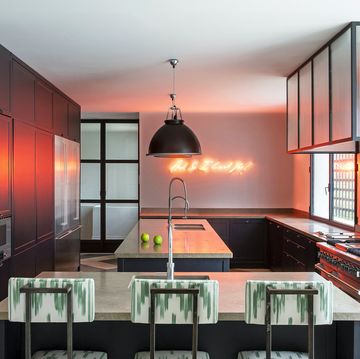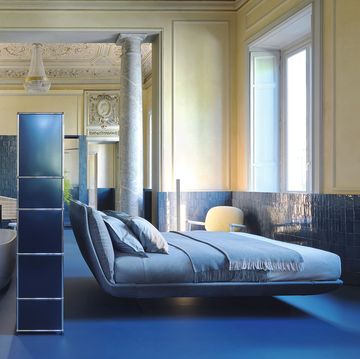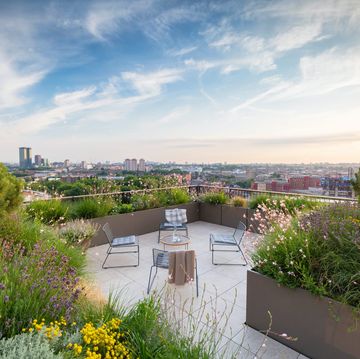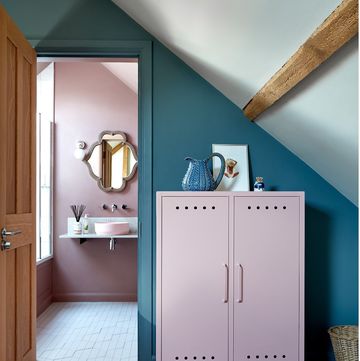Founded in 2017 by Alexy Kos and Che Huang, Child Studio creates ‘nostalgic and cinematic’ interiors for residential, retail and hospitality spaces. The pair, who are based in a former glass factory in east London, met as MA students at University of the Arts London, where Kos studied architecture and interiors and Huang specialised in furniture and object design.
After graduation, they spent a decade working for various brands and studios – Huang creating products for Alexander McQueen, Moroso and Swarovski, as well as installations at Design Miami and the V&A, and Kos masterminding interiors for Mulberry, Selfridges and the Ace Hotel.
Both from artistic families (Huang’s father is an architect), the pair now lead a small team of creatives.
What's everyone reading?
What’s their style? Kos and Huang say they don’t have a set aesthetic, but their interiors are always sophisticated and elegant, with a traditional-meets-modern feel and a sensual approach to materials (think lots of comforting wood panelling). ‘We see interior design as a collaborative process, where we aim to capture the essence of how a client wants to feel in their space,’ says Huang. ‘This dialogue is what makes each project such an exciting journey.’
They list the work of the Austrian architect Adolf Loos, Ernő Goldfinger’s Two Willow Road residence in Hampstead and the romantic Musée Nissim de Camondo in Paris among their influences.
‘What inspires us most is travel,’ adds Kos. As for their palette, the focus is on natural finishes such as wood, stone and metal, which they fashion into unique, bespoke pieces.
What are their recent projects? They have just created a Mayfair lounge for a hotelier/restaurateur who wanted a space in which to entertain and host meetings. ‘Tucked away in a historic mews courtyard, the interior balances art-deco references with 1960s and 70s modernism,’ says Kos. ‘The focal point is a grand fireplace beneath a linear skylight, which is surrounded by an eclectic mix of 20th-century furniture, sculptures and heirlooms, creating an effortless and lived-in atmosphere.’
On a different note, their work on Maido, a Japanese restaurant in London’s St John’s Wood, saw them transform a former 1960s post office. ‘Our design pays tribute to London’s modernist heritage – the Japanese references are subtle and present themselves through geometric patterns and hand-crafted woodwork,’ explains Huang.
What are they working on next? A hotel and members’ club in New York, which they are reinventing with a modern interpretation of American vernacular style. All the furniture and lighting is being designed by Child Studio and custom-made in Italy.
Also on their books are a clutch of London hotels and restaurants and two period homes in Notting Hill and Islington.
They say ‘We don’t limit ourselves to a particular style. The starting point is always an atmosphere that we aim to create – that’s why we often describe our work as cinematic.’ childstudio.co
How to create a ‘cinematic’ atmosphere at home
Child Studio share their top advice for designing rooms worthy of the big screen
We like a palette that is authentic to a building’s heritage. For the Cubitts store in Belgravia, which is housed in a 19th-century townhouse, we were inspired by Georgian interiors and used a deep-yellow paint from Little Greene on the walls.
Lighting is the most important tool for us, as it determines the mood and ambience. We always develop multiple lighting settings for different occasions. For a recent project in Mayfair, we inserted a long, narrow skylight along the living-room wall above the fireplace. Lighting was also built into the bookshelves for a warm, soft glow, while freestanding decorative lamps added a third layer of interest.
Wood is a material we turn to when we want to create something unique and evocative. At Maido, a Japanese restaurant in London, we enveloped the whole interior in cherrywood panelling, with subtle niches for artwork. The wood grain forms its own beautiful pattern.
To achieve a relaxed, informal feel, we favour a layered approach, mixing classic modernist furniture with bespoke cabinetry and antique lighting. Our Mayfair project is a good example: here, we took care to assemble an intriguing mix of smaller objects – including tableware, sculptures and art books – that worked to create a cosy environment.



